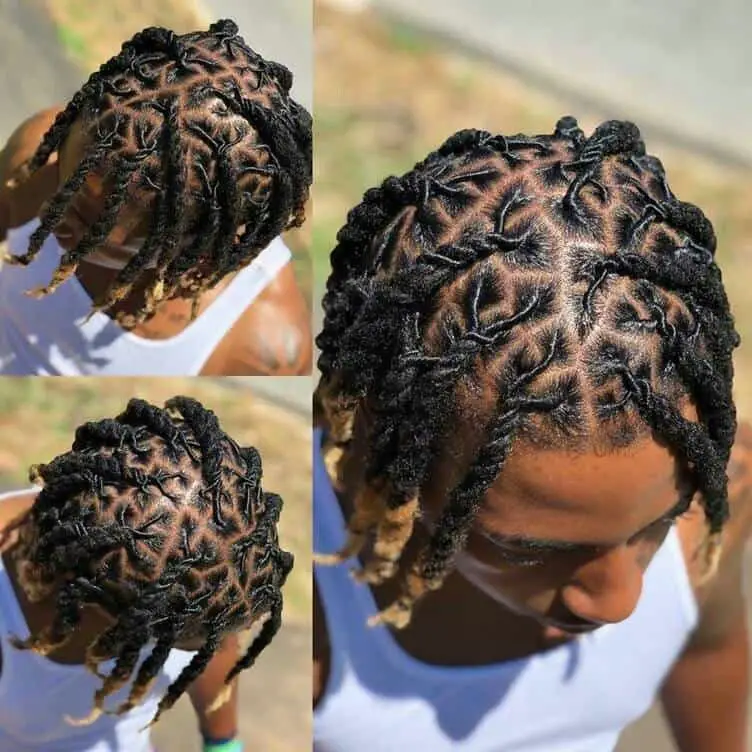If you’ve been looking for a way to switch up your loc style with something that stands out, the dread 3 strand twist offers a unique option.
Unlike the familiar two-strand twist, this method uses three strands, creating a fuller, more textured look that many people find both striking and practical.
Whether you’re exploring it as a styling choice or as part of your loc maintenance routine, understanding how it works, the benefits, and the challenges can help you decide if it’s the right fit for you.

Table of Contents
What is a Dread 3 Strand Twist?
- Instead of dividing a section of locs into two parts and twisting them around each other (typical two-strand twist), you divide into three smaller strands or lobes and twist in an over-under (or braid-twist hybrid) fashion.
- The three strands twist around each other, similar to a braid, but the motion is twisting (as in twisting motion) rather than strict braiding.
- Because it involves more “crossover” movement, it can yield a different texture or visual effect than two-strand methods.
When this method is applied to locs or to hair that is going to become locs, sometimes you see people “re-twist” or style locs using tri-strand technique to get clean parts, hold shape, or add design.
How Is a Dread 3 Strand Twist Done (Basic Technique)?
Here’s a simplified description of the steps:
- Sectioning
Divide your hair (or the locs you’re re-twisting) into sections of your desired size. For each section, split into three roughly equal strands. - First Pass / Initial Twist
You might start by doing a simple twist of strand A over strand B, then strand C under or around—there are variations in how one initiates the movement. Some tutorials begin by twisting two strands first, then bringing in the third. - Ongoing Twist / Crossover Movement
As you continue, you always move one outer strand over (or under) the middle, pulling it in, then bring the opposite outer strand into the middle, etc. Essentially you alternate which “outer” becomes the central twist, maintaining the tri-strand structure. - Locking / Securing the Ends
Depending on your hair or loc maturity, you may palm roll, use a small band, or let the ends naturally catch / lock. - Repeat
Do this for all sections.
In practice, many tutorials show the tri-strand twist being used to style hair or locs rather than forming brand new locs from loose hair; it’s more often a stylistic / maintenance technique.
Advantages & Disadvantages of 3 Strand Locs
Advantages of 3 Strand Twist Dreads
- More structural complexity — the extra strand gives additional “crossover” which can help the twist hold better, especially in slightly looser or less mature locs.
- Different visual texture — you get a twist look that is more intricate, which can be aesthetically appealing.
- Longer lasting in some cases — some people report that a three-strand twist holds its shape more between touch-ups than a two-strand.
- Can allow for more design flexibility (e.g., patterns, direction changes) than simpler twists.
Disadvantages / Challenges of 3 Strand Twist Locs/Three Strand Twist Men
- More time & skill required — managing three strands is more complex, especially on dreadlocks, so requires more dexterity and patience.
READ ALSO: Havana Restaurant Nairobi & More
Hairstyles for Locs Twists
If you would like to see twist styles on dreadlocks, click here.
READ ALSO: Exploring the World of Funky Locs Hairstyles for Ladies 2023
Photo credits: DREADLOCKulture, Marcel, @mxzvoop
READ ALSO: Discovering the Diversity of Twist Locs Styles Today in 2024: Celebrating Heritage and Individuality